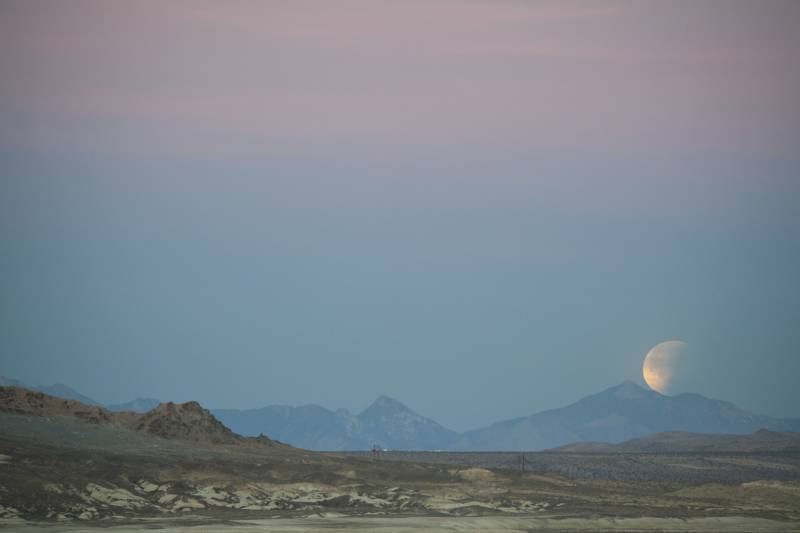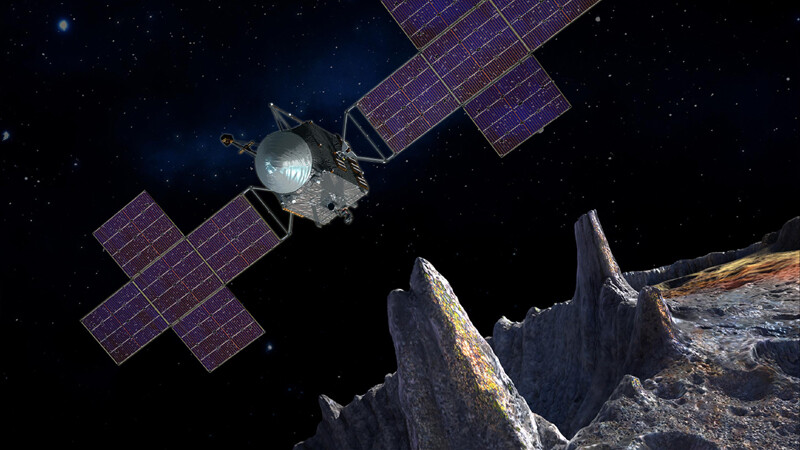There’s nothing better than staring up at the clear, dark, dazzling, starry skies with a cup of hot chocolate and good company.
And with the weather beginning to warm up, perhaps you're already thinking about planning future trips around the Bay Area — and opportunities to get outdoors and revel in those night skies.
We spoke with Ben Burress, staff astronomer at Oakland's Chabot Space and Science Center, about the astronomical events he’s excited to witness in 2022, and the celestial wonders he recommends marking your calendars for.
On a clear night, these events all can be seen from the Bay Area and surrounding places. So for all you astronomy buffs, moon chasers and stargazers out there, the following guide is for you.
Skip to:
Where to see the best night skies for the following astronomical events
Unless you live somewhere remote, you'll probably have to leave the comfort of your own home to see the full splendor of the astronomical events on Burress's recommendation list.
"Getting away from city lights as much as possible, if you can, is the most important thing," he said. And since that might mean being in an unfamiliar (and dark) location, remember to stay aware of your surroundings and "make sure you're in a safe place," he said.
One place to avoid? As beautiful as coastal areas can be during the day, they don't make the best stargazing spots, says Burress, "because if there's a fog pattern going on, you get fogged out."
You also want to consider timing. "You can only really view a meteor shower after midnight, past two or three in the morning," said Burress. "So you do have to put in some late night hours."
Lastly, remember to dress warmly and bring something to separate your body from the cold ground. "Bring chairs or something to lay down on, or a blanket on the ground," he recommended.
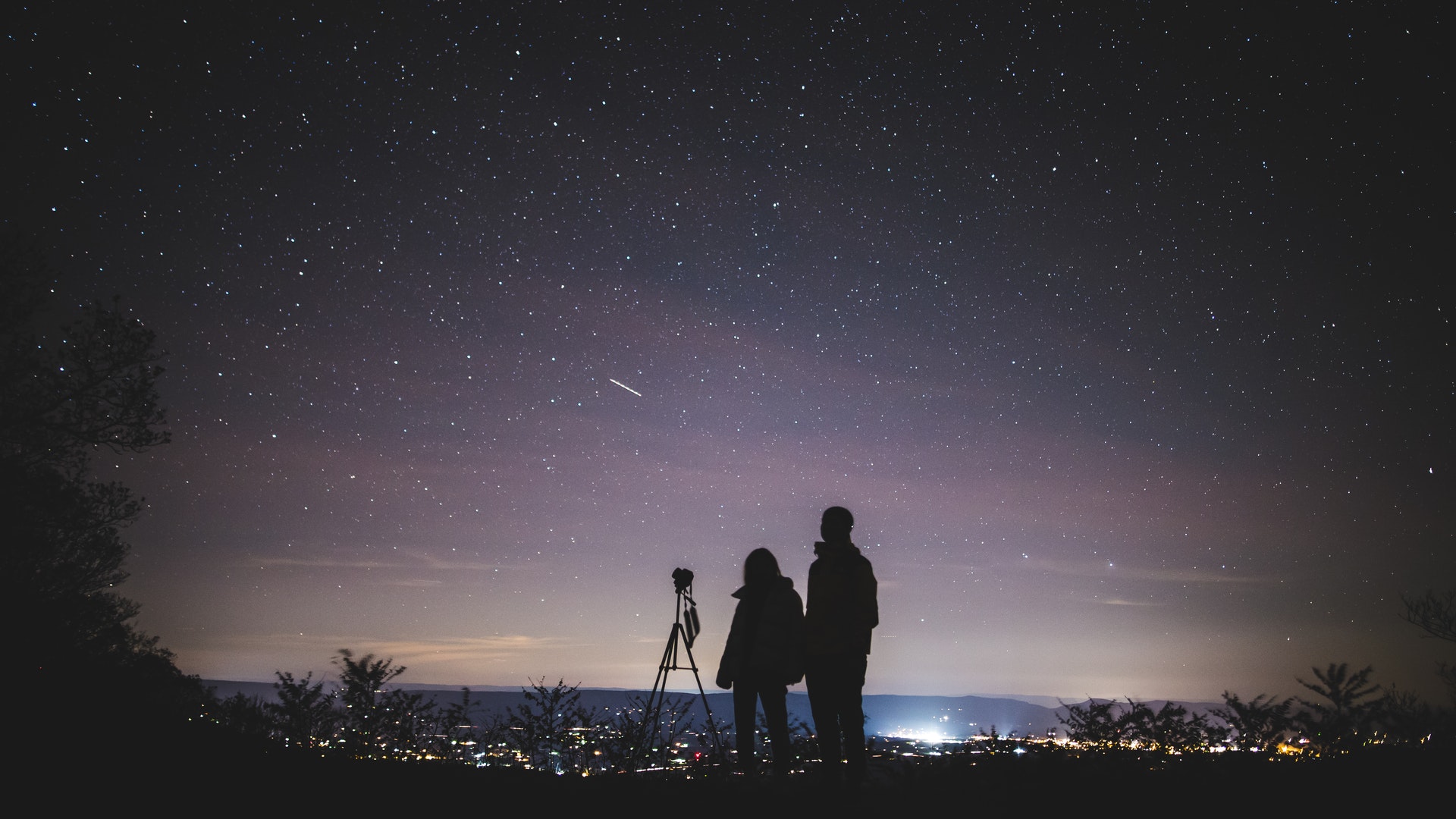
An astronomer's favorite spots for night skies in the Bay Area
For general stargazing and viewing meteor showers:
- Chabot Space and Science Center in the Oakland hills
- Strawberry Hill in Golden Gate Park, San Francisco
- Twin Peaks, San Francisco
- Point Reyes
- Redwood Regional Park, Oakland
- Sibley Volcanic Regional Preserve, Oakland
- Grizzly Peak, Berkeley
- Mount Diablo
- Lick Observatory, San Jose
- Skyline Ridge Open Space Preserve (Preserve closes ½ hour after sunset. Free permit required to remain later)
- Muir Beach Overlook, Muir Beach
For seeing a supermoon:
- Under the Dumbarton Bridge
- Coyote Point Recreation Area
- Silicon Valley Vista Point
You can also consult the Peninsula Open Space Trust's guide to moongazing spots around the Bay Area.
Meteor showers to see in 2022
April: Lyrid meteor shower
The Lyrids are among the oldest known meteor showers and have existed in our skies for over 2,700 years. They appear to come from a point within the constellation of Lyra — near its brightest star, Vega — but like other meteors, they can appear anywhere in the sky.
Lyrids originate from dust particles left by Comet Thatcher, discovered in 1861. The Lyrid meteor shower usually produces only 10-15 meteors per hour at its peak, so catching sight of them might take a bit of patience.
The best time to see the Lyrids is after sunset on April 21, and before moonrise in the early morning. The shower will last from around April 15 through April 29, according to EarthSky.
August: Perseid meteor showers
Probably the most popular meteor shower out there, and the most reliably bountiful, the Perseids will be visible from the Bay Area's night skies in mid-August.
Perseids originate from Comet Swift-Tuttle, discovered in 1862. This comet was said to have a nucleus of about 16 miles across — twice the size of the asteroid that brought about the extinction of dinosaurs. Perseids radiate from a point in the Perseus the Hero constellation.
The predicted peak, where the shower is expected to produce the most meteors, is in the wee hours of Aug. 11-13, before dawn on those days. But the shower has a long range — from July 14 to Sept. 1 — and it's "very reliable," Burress said. If you're somewhere with nice dark skies, your chances of seeing even the fainter meteors at a rate of "50 or 60 meteors per hour" are rather good, he says.
"You might expect to see one every minute or so. So that's pretty exciting," he said.
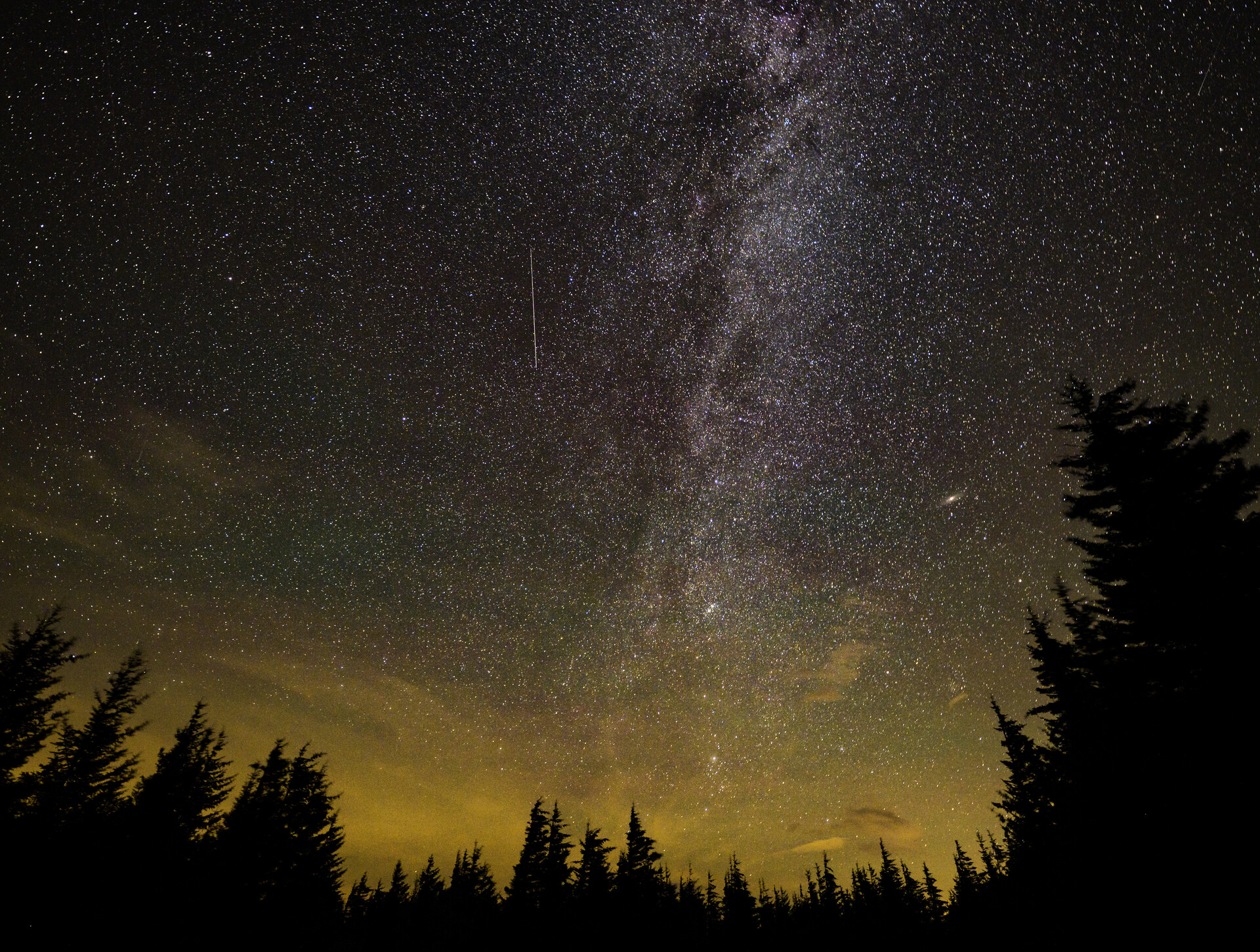
November: Leonid meteor showers
The Leonids' point of origin is in the constellation of Leo, the lion. They’re associated with Comet Tempel-Tuttle, discovered in 1865, and are also known for their spectacular meteor storms that occur about every 33 years.
Back in 1966, viewers saw a dazzling shower of thousands of meteors per minute, lasting for about 15 minutes. The last meteor storm happened in 2002 — so although this year won’t be as spectacular as 2002, on average you can still hope to see about 15 meteors per hour.
The best time to see the Leonids is on November 17 or 18 when they peak. Burress said at that time of year we get "really nice, dark night skies" that stay clear if we don't have rain, making the Leonids a particularly good shower to spot.
December: Geminid meteor showers
The Geminids are considered one of the most spectacular meteor showers of the year, offering a chance to see some 120 meteors per hour at their peak — and you can hope to see them from the Bay Area in December, weather permitting.
The Geminids owe their name to the constellation Gemini, from which they emerge. Unlike many other meteor showers that originate from comets, Geminids are said to originate from an asteroid called 3200 Phaethon.
You can expect to see the peak of the showers Dec. 13-14, but the showers will be taking place Dec. 4-Dec. 20.
Total eclipses to see in 2022
A total lunar eclipse is often called a blood moon, because of the reddish color the full moon takes on. This red cast is caused by the same mechanism (called Rayleigh scattering) that causes the colorful sunrises, sunsets and blue skies that we love so much. And from the Bay Area, you can view two total lunar eclipses this year.
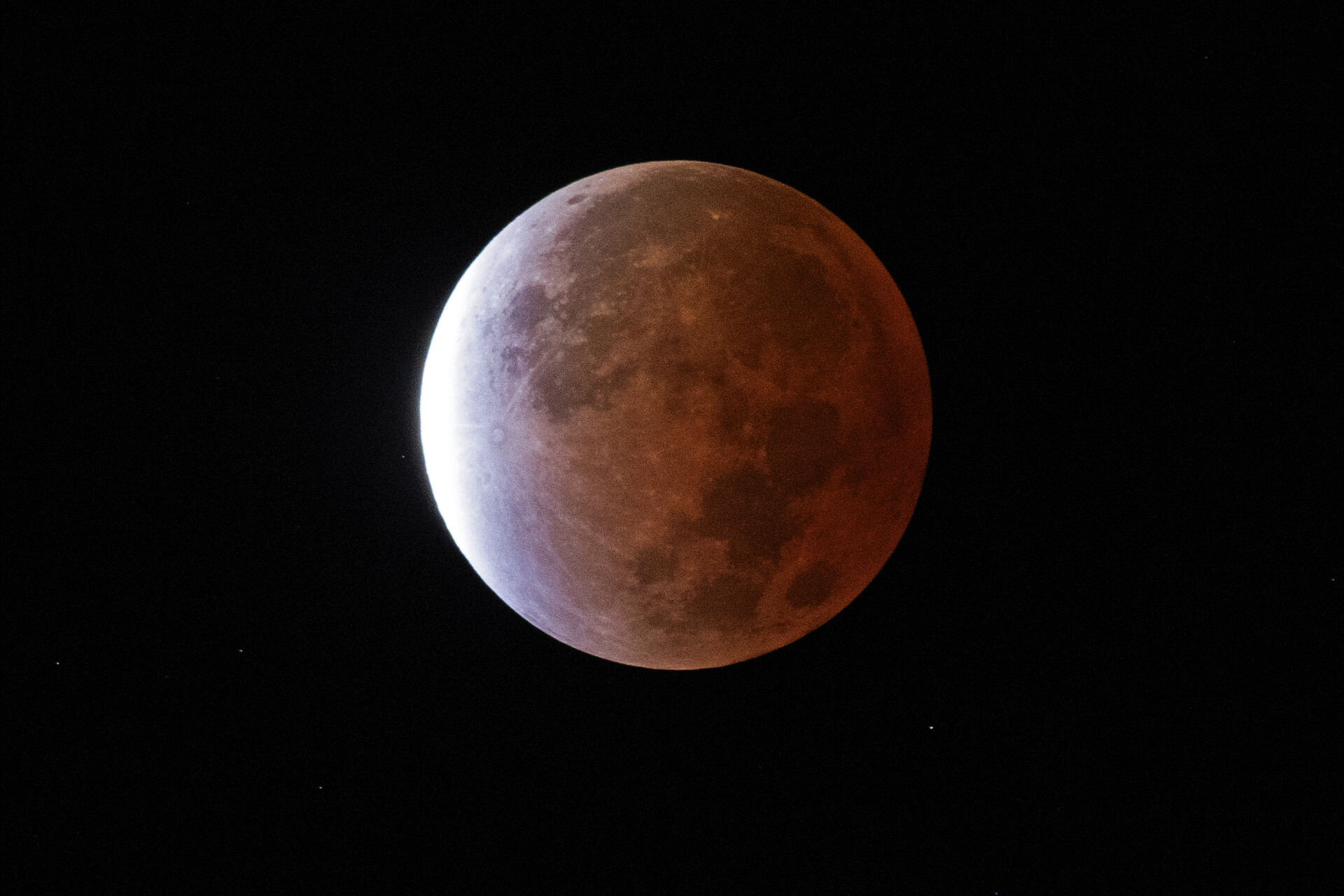
May: Blood moon No. 1
The first one will be on May 15, beginning around 8 p.m. Earth's shadow will cover the moon at around 9 p.m. and the eclipse will last until about midnight.
By the time the moon rises at around 8 p.m., "the eclipse will already be happening at that point," said Burress. "It will be dark or kind of dark red in color, and will be really amazing if you can get a good view of the eastern sky where it's rising," he said.
November: Blood moon No. 2
You can also enjoy another view of a total lunar eclipse on Nov. 8. This one, Burress said, will last longer and give you a better opportunity for viewing.
During this November event, "you will actually be able to see the entire eclipse from beginning to end," Burress said. "It'll last quite a number of hours, so it'll begin just after midnight. And it gets best around two and three in the morning, roughly."
As sunrise draws closer, the eclipse will, of course, draw to its end — "but the whole eclipse will happen while it's dark at night, so that that's actually a good one, [with] plenty of time," Burress said.
Supermoons to see in 2022
When a full moon is closest to the Earth — what's known as its perigee — that’s what's called a supermoon. But what’s so special about a supermoon?
"A supermoon will be 30% brighter — maybe 15% brighter — than your average full moon," said Burress. "And when the supermoon occurs at the same time as a lunar eclipse, or even solar eclipse, those eclipses are even more amazing. The lunar eclipse will last longer and then will get darker during totality."
This year, among the many full moons we’ll be able to witness, there will be two supermoons we can look forward to.
